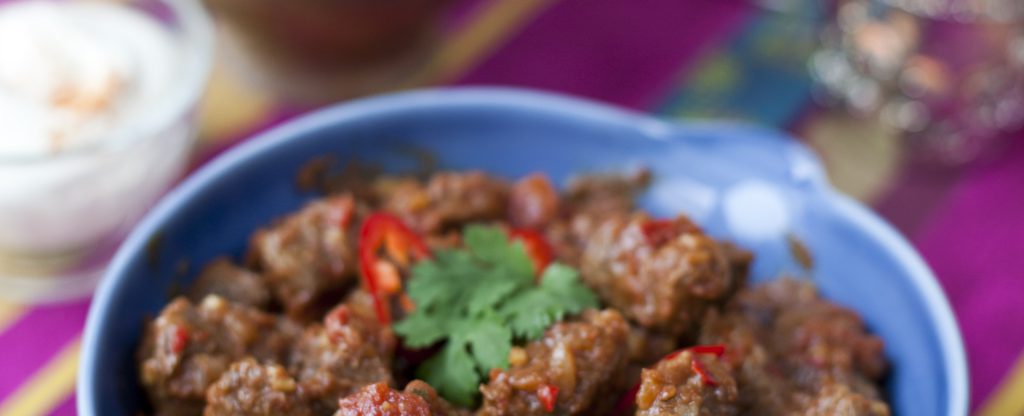With the cold winter nights well and truly here, our need for warming, interesting dishes hit critical mass. While making your favourite Rendang, or adding a bit of spice to your tagine how brilliant would it be to add chilli’s that you’ve grown yourself, in your kitchen? Whether you are chilli au fait or a novice, we have chilli expert Joy Michaud on hand to help explain everything about this marvellous fruit!
How do you know what chili seeds to start with?
To get the best out of growing chillies it is very important to choose the right variety for your needs. The variety must be one that will suit your growing skills, make best use of the space available and fit your culinary requirements.
1. Growing Skill:
Generally, chillies belonging to the Capsicum annuum species (e.g. cayennes, jalapenos, etc.) are easier to grow than C. chinensis species (e.g. the scotch bonnets, super hots, etc.). Specifically, we normally recommend the varieties called Spike (very hot), Super Tramp (hot), Joe’s Long Cayenne and Loco (medium), Hungarian Hot Wax (mild/medium) and Thai Green Curry (very mild) as these are easier to grow.
2. Plant size:
Some chilli varieties will grow into large plants, e.g., Mulato Isleno and Pimiento de Padron. These need to be grown in the ground or very large pots. Other varieties will always be small statured, e.g., Stumpy and Prairie Fire. These are good in small pots, and can be kept as edible house plants on a windowsill.
Always check the variety description for plant size before buying. Generally, if a plant is described as “Bushy” it is likely to do better in a small pot than one described as tall.
3. Culinary use:
i) Spice-type or vegetable-type chilli?
Chillies can be divided into two types depending on how they are used in the kitchen.
Vegetable-type chillies
Vegetable-type chillies are relatively large-fruited and thick-fleshed, and tend to be milder than the spice-type varieties. Because of their bulk, these chillies are used mostly as a vegetable, playing virtually the same culinary role as sweet peppers – they are ideal stuffed with meat, rice or cheese; chopped into salads or salsas; and cooked in stews, stir fries and omelettes.
Spice-type chillies
The spice chillies – including the habaneros and super hots – are generally small-fruited and thin-fleshed, and are usually hotter than the vegetable chillies. They are used to add heat and flavour to a dish, but contribute very little bulk. In addition, they are ideal for drying and milling into a powder. Some varieties are also very attractive and can be used as ‘edible ornamentals’, and do well as houseplants.
ii) How hot do you want your chillies?
The heat level in chillies is measured in Scoville Heat Units (SHU). Generally heat levels are categorised according to the following formula:
Sweet: 0 SHU
Mild: up to 5,000 SHU
Low medium: 5,000 – 20,000 SHU
High medium: 20,000 – 35,000 SHU
Hot: 35,000 – 100,000 SHU
Very hot: 100,000 – 500,000 SHU
Superhot: 500,000 SHU +
Please note:
The scale is highly subjective and depends on an individual’s own tolerance to heat.
Beef has a strong, rich flavour and requires a chilli with a robust flavour to compliment it. We would normally recommend a poblano chilli type (we sell “Mulato Isleno” poblano), as this has a very rich, almost smoky flavour that goes wonderfully with beef. Hungarian Hot Wax would also be good. These are vegetable-type chillies. For heat, use a spice type chilli such as a cayanne chilli. Generally, do not use a scotch bonnet chilli as these have a fruity flavour, which is quite wonderful, but typically not compatible with beef.
How much maintenance does a chili plant need?
Chillies need a lot of care to start from seed. This is why we sell them as “plug plants” (see www.seaspringplants.co.uk). Once a chilli plant is more mature it is relatively easy to look after. It must be kept in a warm environment (conservatory, windowsill, greenhouse, etc.) and it needs as much sunlight as it can get. Given regular watering, fertiliser now and then, and your plant will do fine.
How long does a chili plant live & how many chilies will I grow?
Chillies are perennials and will grow continuously for many years in the tropics. However, they do not like British winters, they must be kept warm, but even then the low light levels we get in the winter stresses the plants and they tend to drop their leaves and go dormant. During the winter the watering must be reduced.
How do I prepare the chilies?
Chillies are incredibly versatile and the way they are prepared depends on whether the chilli is a vegetable or spice type chilli. The main reason for removing the seeds is because mature seeds can get very tough and unpleasant to eat and are better avoided. If you are removing the seeds to reduce heat level (it is the pith, not the seeds that are hot) then try using a less hot variety.
If the chilli is a vegetable chilli then use it just like a sweet pepper. If it is a spice chilli, then cut it up and use it with all other spices!
Joy runs Sea Spring Seeds, a Dorset based specialist vegetable seed nursery overlooking the English Channel. See more at http://www.seaspringplants.co.uk/


